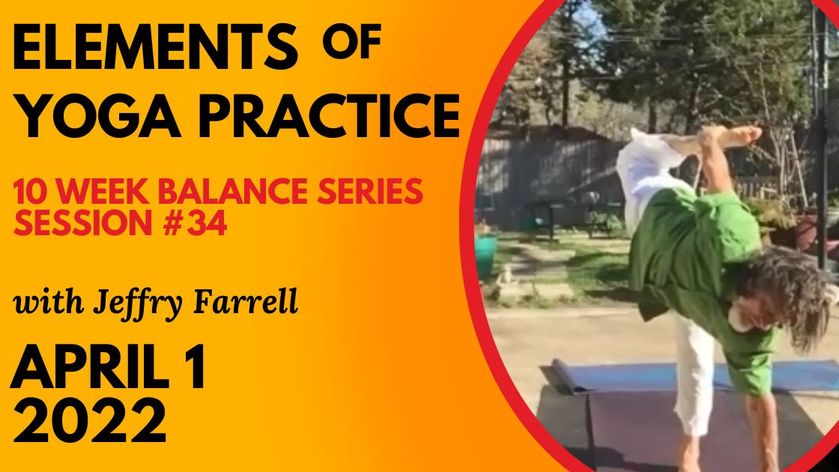It's really a video not an article. . . . And it is the captured video of one Salute sequence originating with one side.

The Vira means the Heroic and the Lila means the Playful.
To practice Vira is a powerful practice because there is either victory or defeat. Victory is not the perfect pose, but the fullness of the practice. What do I mean by that? To make a Vira practice is 1) to establish the whole grounded presence (shtira), 2) to set an intention (sankalpa), 3) to enter into the fullness of oppositional expression with effortless effort (sukha), until 4) we identify limitation, resistance, obstruction, pain (dukha), and 5) to exit, either to return to the original position or to carry forward into another intention.
With Vira there is no retreat, no wiggle, no adjustment as I go. With clarity I can observe my intention and the quality of its expression. There is victory in that observation. There is a foothold or grip. I can make the adjustment next time. There may be failure, or a break in the pose. If so, I release and start again from the beginning. Kumar would say, “There is no shortcut, man.” The purpose is to activate discipline and functional will, not merely to achieve a desire or outcome. Through concentration and discipline one achieves, but ultimately, the Vira practice isn’t about the glory of the posture but the instincts of life.
To practice Lila is to play out an intention, and not to play in a random, crappy, anything is ok way. That isn’t honorable play. To practice Lila is to play, to carry shtira with effortless effort, and to continuously adjust oneself into greater shtira. Lila is the willingness to observe, to explore, to discover, and to seek adjustment in the moment, to seek the shtira in the expression and the effortless effort. To practice Lila is to approach dukha and respond in presence. With Lila I maintain the vessel of intended asana and improvise within that form, using breath and adjustment with curiosity and discovery.
Vira is to withhold adjustment while learning the clarity of specific limitation, dukha. With that learning, I can adjust myself internally so that my next repetition includes the adjustment.
Lila is to improvise well and within an intentional form.
This is a video of the left side initiating movement in a Salute to the Sun sequence.
Breath is first. It activates stability and sensation, strength, balance, and an active but receptive mind. Then, move.
Congratulations! You are about to complete the first chapter and the first series of one minute videos.
There are several positions with inter-laced fingers. Do this one first and breathe nine deep breaths. If you cannot do this, nevermind. And accept the completion of the first chapter! You are prepared to go on to Chapter II which is the first sequence for Breath.
We will come back to Laced Fingers again in a subsequent chapter.
I will add specific series for laced fingers witih arm movement in future uploads. Every position has many variations. Every position begins with breath, stability, and wholeness. In every position we set our intention and move, guided by breath. The work is an effortless effort that confronts pain and learns.
This video completes the initial series of nine short videos to awaken the upper body.
IF YOU STARTED HERE GO BACK LIKE SHOOTS AND LADDERS TO THE FIRST VIDEO —
I. Standing A.) Arms, Shoulders, Neck 1.) Open/close the fist....
From a standing upright position, maintain stable and unmoving shoulders as best you can.
Isolate the head’s movement with a nod forward and back. Hinge the head forward and back. Inhale back, exhale forward. Make at least three reps of nodding “yes.”
Return to center. Turn the whole head right and then left. Turn the chin and forehead equally. Turn your eyes deeply back, too. First breath is to exhale over your shoulder. Make at least three reps of “no.”
Return to center. Tilt the head to one side. Pretend you could lift the ear up into the sky. Stay there and breathe. Feel the dilation in that side fo the neck. Feel the compression on the opposite side. Take three breaths on each side. Make three reps of “maybe.”
Return to center and make a circle with the top of your head. Turn the head three times to the right, then reverse three times. Every circle is a breath.
HOW TO USE THIS VIDEO SERIES:
Please watch the video then make the movement. Make at ...
If you have any questions about payments, text Donna at 214-663-3991.
~Group class rate if you have joined the Locals online group at the FREE level: $30. Click here to pay: https://buy.stripe.com/cNi28qemN5q0bDldWzf3a0j
~Group class rate for Locals supporters at the $5-$14/month level: $20
Click here to pay: https://buy.stripe.com/8wM16A10Rg249fW8wD
~Group class rate for Locals supporters at the $15-$59/month level: $15
Click here to pay: https://buy.stripe.com/cN25mQ7pf7vy2Ry6ow
~Group class rate for Locals supporters at $60 and above: FREE
I like this guy’s work online. He’s been around for a while and speaks so plainly about the body’s maps, functions, that you’re sure to like him, too.















